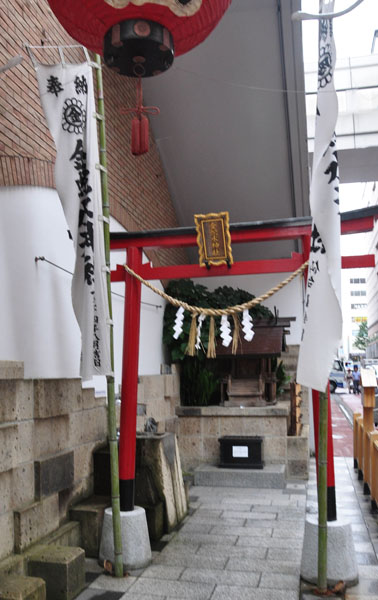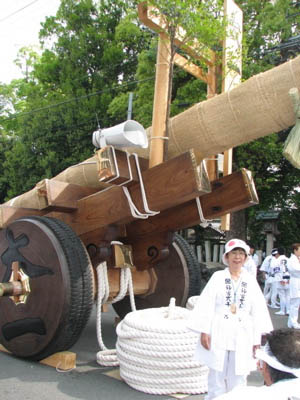
Japanese Vegetarian CuisineIn the summer of 2012 we visited Japan for two weeks as part of a research project on land snail biodiversity supported by the Japanese Society for the Promotion of Science. We spent much of our time at Tōhoku University in Sendai at the laboratory of our collaborator Satoshi Chiba, as well as a week exploring southern and eastern Hokkaido, and a day in western Tokyo helping the regional conservation authorities survey an endangered wetland site. This was the first time we had visited any country in the Far East, and we came away with a great appreciation for the culture and landscape of this wonderful place. 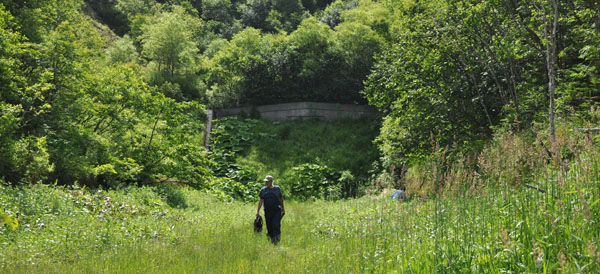 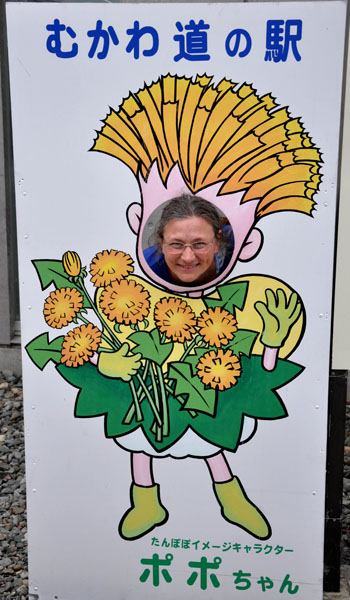
Left: Jeff at Nissho Pass; Right: Linda as the Mukawa Dandelion Girl
Humans arrived in these islands at least 50,000 years ago, before the climax of the last ice age. These people were largely hunter-gatherers that lived much like the cultures of the Pacific Northwest in North America, and largely subsisted off the abundant fish, shellfish, and seaweed in the Pacific. Permanent agriculture gradually developed with Japanese, Korean, and northern Chinese agriculturalists domesticating a number of local plants including various millets, tubers and radishes, cabbage, adzuki beans, great burdock, soybeans, buckwheat, bunching onions, peaches and persimmons. The relatively mild climate, abundant moisture, and rich soils derived from volcanic eruptions allowed Japanese farmers to produce a diverse and abundant larder from which to feed their people. If there is one single book you should read about Japanese agriculture, we recommend the “One Straw Revolution” by Masanobu Fukuoka, which relates how traditional Japanese culture addresses the growing of food and tending of fields, and makes a strong case that we must do a better job of feeding ourselves.
Because Japanese culture embraces the transient nature of existence, it should not be surprising that one of the guiding principles of Japanese food is that it reflects the local environment and seasons. A millennium before "fresh and local" became the latest food fad in the USA, Japanese cooks insisted on using only the freshest and purest local ingredients, served only when in season at their very height of quality, and in simple ways that allow their true essences to be expressed. If Indian cooking is thought of as an epic poem (the Sanskrit epic Mahābhārata is over 1.8 million words long), Japanese cooking is akin to haiku: summer heat lingers, While a single Indian masala is often made from literally dozens of spices and herbs (see the Balti Masala Paste for an example), Japanese cuisine takes only a few flavorings -- primarily soy sauce, miso (fermented soy paste), sake, mirin (sweet sake), rice vinegar, dashi (flavored stock), and sesame -- to bring out the flavors found within food. It is almost unheard of for a Japanese dish to contain more than a dozen ingredients. But, as you’ll see, even though the same flavorings are used again and again each dish tastes different and is evocative of its principle ingredients, whether they be spinach, daikon, gobo, green beans, or eggplant. Japanese cuisine is a wonderful place to find inspired vegetarian cooking. By the 8th century principles of vegetarianism had become well established in Japan via Buddhist doctrine imported from China. For this month, we’ll show you how to make a vegetarian meal that celebrates the end of winter and the coming of the spring, adapted from two of our favorite Japanese cookbooks: The Book of Miso by William Shurtleff & Akiko Aoyagi and Japanese Cooking for the American Table by Susan Fuller Slack.
|
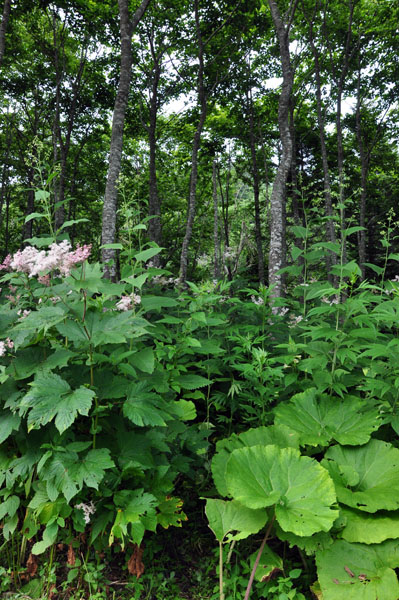 The main part of the Japanese archipelago extends over 1200 miles from the north tip of Hokkaido (Konpoku Pass in picture to left is at roughly the same latitude as Linda’s hometown of Sturgeon Bay, Wisconsin) to the Tokara Islands off the south coast of Kyushu (roughly the same latitude as New Orleans, Louisiana). The islands of Japan have formed at the juncture of the Pacific, North American, Eurasian, and Philippine plates, and as a result are subject to not only frequent large earthquakes and volcanism, but associated tsunamis along the coast and landslides in the interior. Japan is also subject to tropical cyclones (typhoons) with their associated high winds, heavy rain, flash floods and even more landslides. The dynamic nature of Japan’s environment was never far removed from us during this trip, whether it was seeing cracks in the stairway to Satoshi’s second floor laboratory -- lingering damage fro
The main part of the Japanese archipelago extends over 1200 miles from the north tip of Hokkaido (Konpoku Pass in picture to left is at roughly the same latitude as Linda’s hometown of Sturgeon Bay, Wisconsin) to the Tokara Islands off the south coast of Kyushu (roughly the same latitude as New Orleans, Louisiana). The islands of Japan have formed at the juncture of the Pacific, North American, Eurasian, and Philippine plates, and as a result are subject to not only frequent large earthquakes and volcanism, but associated tsunamis along the coast and landslides in the interior. Japan is also subject to tropical cyclones (typhoons) with their associated high winds, heavy rain, flash floods and even more landslides. The dynamic nature of Japan’s environment was never far removed from us during this trip, whether it was seeing cracks in the stairway to Satoshi’s second floor laboratory -- lingering damage fro m the 2011 Great Tōhoku earthquake, to the volcanoes that presided over our sampling from Abishiri to the Kanto Plain (Mt. Fuji as seen from Tokyo in the image to the right), to our difficulty in finding deep accumulations of leaf litter and humus in many habitats because the of frequency at which they had been swept clean in the recent past.
m the 2011 Great Tōhoku earthquake, to the volcanoes that presided over our sampling from Abishiri to the Kanto Plain (Mt. Fuji as seen from Tokyo in the image to the right), to our difficulty in finding deep accumulations of leaf litter and humus in many habitats because the of frequency at which they had been swept clean in the recent past.